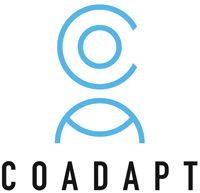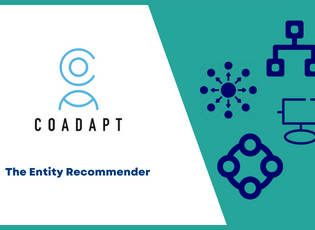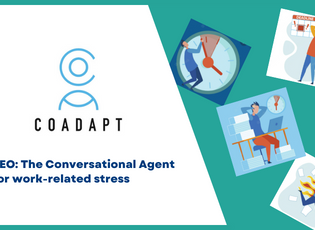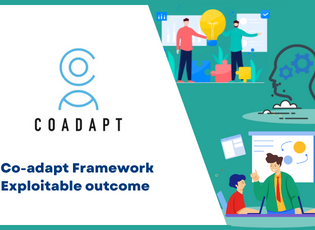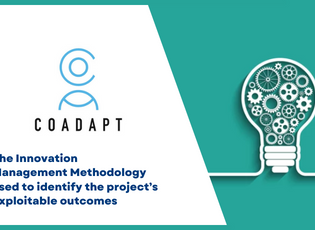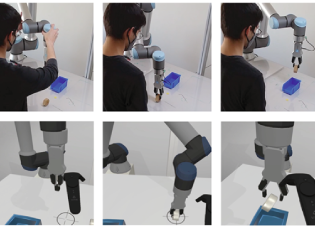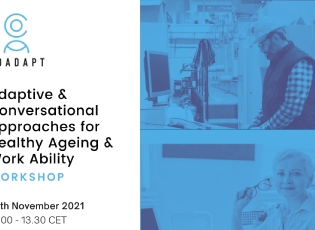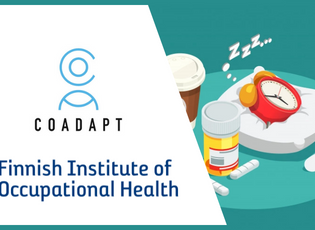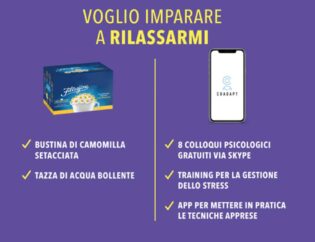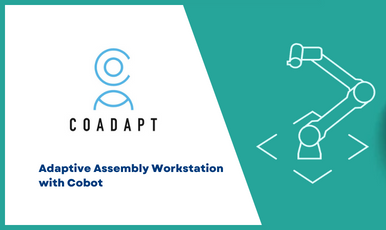
The Adaptive Assembly System (AAS) comprises an innovative adaptive workstation equipped with a collaborative robot (i.e., cobot; See Figure XX). It is an advanced working tool that supports senior and adult operators while carrying out assembling tasks. The workstation can adapt (e.g. workbench height, lighting level) to the operators’ physical and perceptual (i.e. low vision) characteristics. Besides, the cobot is considered a co-worker, and it is exploited in the human-robot dyad for its extreme precision, accuracy, and tirelessness, especially in repetitive and monotonous activities. Overall, collaborative robotics is not seen as a human beings’ replacement but as an instrument that allows taking advantage of the best operators’ skills, i.e. working experience, creativity, problem-solving, and quality check, by taking charge of the tedious and alienating (i.e. repetitive tasks) assembly activities.
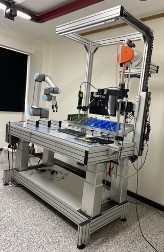
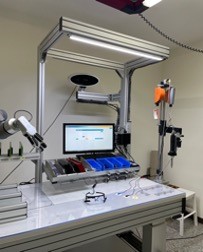
Figure: The AAS (workstation and cobot; on the left) and the eye tracker and surface electrodes (on the workbench; on the right).
Furthermore, the AAS presents non-invasive wearable devices to monitor in real-time workers’ stress/ mental overload based on variations in cognitive and psychophysiological parameters (i.e. eye behaviour and cardiac activity). On the one hand, a pair of eye-tracking glasses are utilized to record eye-related metrics (e.g. pupil diameter, fixations/ blinks duration and frequency, etc.), which reflect mental workload level. On the other hand, a portable and light amplifier, equipped with surface electrodes, is used to track measures related to the cardiac activity (e.g. heart rate, heart rate variability, etc.) associated with mental overload and physical stress conditions.
The cutting-edge feature of the AAS is an embedded psychophysiological algorithm, which can detect, through wearable sensors, conditions of stress and mental overload of workers and tailor its functioning accordingly. Indeed, the AAS implements different adaptations to help operators accomplish their job (e.g. supporting workflow with multimedia instruction, guiding workers’ attention through the physical workspace through a pick-to-light system, modulating the cobot behaviour, etc.). The overall objective of this integrated working tool is to increase operators’ well-being, satisfaction, and safety at the workplace by reducing the errors’ determinants (i.e. stress, mental overload) throughout the real-time implementation of the adaptive features whenever the AAS identifies that the workers are facing difficulties.
Leadership and partners involved
The Adaptive Assembly System is the outcome of a fruitful collaboration between the following two Co-Adapt partners:
- the Human Inspired Technology (HIT) Research Centre of the University of Padova has provided knowledge and methodologies related to co-design (e.g., focus groups) and develop the AAS based on operators’ needs, desires, and expectations. In addition, HIT Centre has exploited its expertise in Human Factors, Ergonomics, Human-Computer/Robot Interaction, Work and Organizational Psychology, and stress and mental workload for designing the experimental paradigms and tasks and carrying out the trials. Finally, the Research Centre has developed a real-time algorithm for monitoring operators’ stress and mental load levels that is embedded in the AAS. The algorithm allows a set of adaptive features to be implemented, as was described in Section 5.3.2.
- BNP is specialized in developing products and solutions for industrial ergonomics. BNP has designed and manufactured the AAS by integrating technologies with solutions specifically developed for this project. BNP has also developed software that allows controlling the cobot and all the devices on the workstation. The skills developed in CO-ADAPT enable BNP to explore new business strongly related to the company’s philosophy, particularly regarding usability and the benefits of an industrial ergonomic approach. BNP’s primary goal is to implement an industrialized version of the AAS and the cognitive load monitoring algorithm.
UNIPD trials
The Human-Inspired Technology Research Centre is finalizing the last experiments on the Adaptive Assembly System involving senior workers (older than 50 y.o.). In these trials, different conditions of stress and mental workload were considered, varying the experimental tasks’ difficulty. We tested various adaptive features (e.g. modifications in robot dynamics) of the AAS conceived to support operators in conditions of stress and mental overload, i.e., dual-task accomplishment, by monitoring eye behavior (eye-tracking glasses) and cardiac activity (surface electrodes). Besides, a sub-sample of participants accepted to be monitored in their non-working life through a wearable device (i.e. a smart ring). This permits the evaluation of potential relationships between different parameters (e.g. heart rate, sleep quality, etc.) collected for seven nights before the laboratory test and the psychophysiological measures (e.g., heart rate) collected during the trials. Finally, information about system acceptance, user experience, and perceived task load was gathered through the administration of questionnaires and brief interviews.
Market and competition analysis
To what pertains the target size of the market can be estimated in:
– 100 M at the National level (i.e. Italy);
– 1500 M at the International level (i.e. Europe);
The HIT Centre and BNP estimate that it can reach 1% of this market, considering mainly the following productive sectors: automotive, white goods, general industry, furniture, and medical devices.
The current market offers only technological solutions for the workplace which do not fully consider senior operators. For instance, the interfaces of these working devices present a higher level of complexity, and the industrial technologies are unable to adapt to both static (e.g., reduction in perceptual and cognitive skills) and transient (e.g., level of stress and mental load) characteristics of elderly workers. Differently, the AAS monitoring of the transient states of individuals at the workplace can reduce the determinants of errors. High stress and mental overload can dramatically affect operators’ productivity at the workplace. Because of the AAS help, and because of the errors’ determinant reduction, the expectation is an increment in the level of perceived operators’ job satisfaction, safety, and wellbeing. Thus, the AAS will support workability, productivity, and psychophysical wellbeing (e.g., reducing stress and mental burden).
The AAS will impact all the companies with old operators, but also consider adult workers, and manual working activities (e.g., assembly and repetitive tasks) that cannot be automated through traditional industrial robots. In the contemporary market, where overall product volumes are low due to frequent market changes or customized production, automation is not always the most cost-effective solution. For instance, the production process of an item with a lot of personalization can be very expensive and time-consuming to automate. Each personalization is a variable that can hardly coexist with the rigidity of fully automated systems. A high level of flexibility, and thus competitiveness is obtained by increasing the human operator’s contribution since the dexterity and cognition of workers in both manual and cognitive tasks are considered enablers of increased flexibility.
We foresee that this cutting-edge proposal will be a starting point for a cultural and socially sustainable change inside the organizations and a perfect solution to avoid losing the valuable knowledge and working experience of elderly operators.
The main risk is the difficulty of introducing these working tools to the workplace. In general, robots could be seen as replacing senior operators and as too complicated and dangerous to use. These issues will be managed by providing ad-hoc training sessions and dissemination activities for teaching how to use the AAS and wearable devices (i.e., eye-tracking glasses and portable amplifier). Information on how all the tools operate, which personal data the AAS exploits, and with what purpose (i.e., to increase the integrated system’s transparency and acceptance). Finally, the crucial difference between collaborative and traditional robots in terms of higher support and safety will be detailed.
The identified competitors are:
- Big system integrators that design and develop automated assembly working systems for Industry 4.0/5.0;
- Local producers of non-expensive technological solutions for assembly activities without adaptive/ergonomic features.
The AAS will allow overtaking the competitors mentioned above, on the one hand, by adopting a user-centered approach for the design and development of advanced working tools that will be tailored to the needs and expectations of the final users. On the other hand, by embedding a psychophysiological algorithm for monitoring stress and mental overload and implementing adaptive features accordingly to mitigate these errors’ determinants, the AAS will positively support individuals’ workability, productivity, perceived satisfaction, and well-being.
Exploitation roadmap
- Demo in house
A prototype of AAS will be permanently exposed in the BNP plant showroom. This will allow BNP to show the CO-ADAPT results to several industrial distributors and customers to raise their awareness of the benefits of industrial ergonomics and to propose it as a solution for their industrial processes. This phase will last six months.
- Industrial manufacturing expo
The AAS will be presented at the Mecspe Fair 2022 (June 2022), one of the leading reference fairs for industrial manufacturing. The AAS will be hosted at the Ergoal booth, a strategic BNP partner alongside other innovative technological solutions for manufacturing. The AAS will likely be exhibited at Motek Fair 2022 (October 2022) at the booth of a BNP distributor.
- Demo in collaboration with strategic partner
Ongoing activities pertain to the identification of strategic partners to plan the organization of educational and commercial events where the AAS can be exhibited and in which its cutting-edge adaptive features will be detailed. In this way, the audience of customers belonging to industrial manufacturing will be widened. This phase will last four months.
- A case history in a customer’s plant
A suitable BNP customer will be selected for installing the AAS in an industrial plant. Besides, this phase will allow the AAS testing in a real-world working environment and complete the industrialization process. This activity will last six months.
- Standard products range for distributors Demo in collaboration with strategic partner
After the phases mentioned above, there will be the best conditions to offer standardized products that could be eventually re-designed and adapted based on customers’ feedback. that international distributors can propose in their market segments.
